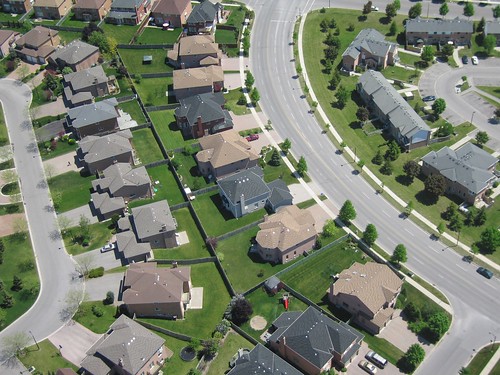Dwell Magazine and Inhabitat.com are hosting a design competition around re-visioning the suburbs. With the goal to re-use the built environment of suburban communities in a new, more sustainable and efficient manner, five high-resolution photos and a statement of the design proposal are all that is required to enter. The submission deadline is July 31st.
For more information and to enter, see www.re-burbia.com
Photo by Antoine Belaieff




8 comments
Bulldozers, reforestation and time are all that’s needed: Detroit’s leading the way.
um, $1000 for the winner? a bit of text for the runners up? In this industry $1000 is pocket change.
An empty suburbia is a great place to dump Toronto’s garbage.
I’ve been thinking a lot about this recently. Here are some ideas:
1. Start with whatever core there is, the old one- block main street, a strip mall, a gas station & convenience store at a major intersection. There must be a sense that the site is, or was historically, a destination.
2. The site must be on a street with no more than 4 lanes, so that it has a chance of becoming pedestrian friendly.
3. The site must be served by frequent rapid transit, or this must be put in place.
4. Add a new commercial property with apartments above adjacent to this core. When it is filled, add another. Build out gradualy.
5. The new development must have parking to survive in the short run, but it must be behind the building. The buildings must be street-facing and pedestrian scaled.
6. There must be pedestrian and cyclist access from the neighbouring streets. This may require expropriation of side yards or whole properties to create linking paths from the typical crescents and cul-de-sacs.
Laurie, my plan is more likely because of suburban stubborness, xenophobia of all those ‘renters’ and transit-users, and unwillingness to pay for a society they don’t want part of. Your plan is good, but isn’t going to happen.
How can you restructure land that is privately owned by thousands of home owners?
It isn’t rundown, why not focus on areas that need to be redeveloped now?
Intensive, small scale farming.
Many suburban lots are as big as an average chinese farm anyway. Jobless recovery+green shift+localizing production pushed by peak oil could make it very likely.
Make a certain allowance for the suburbs to re-design themselves, as it were. (Jane Jacobs understood that t/w the end.)